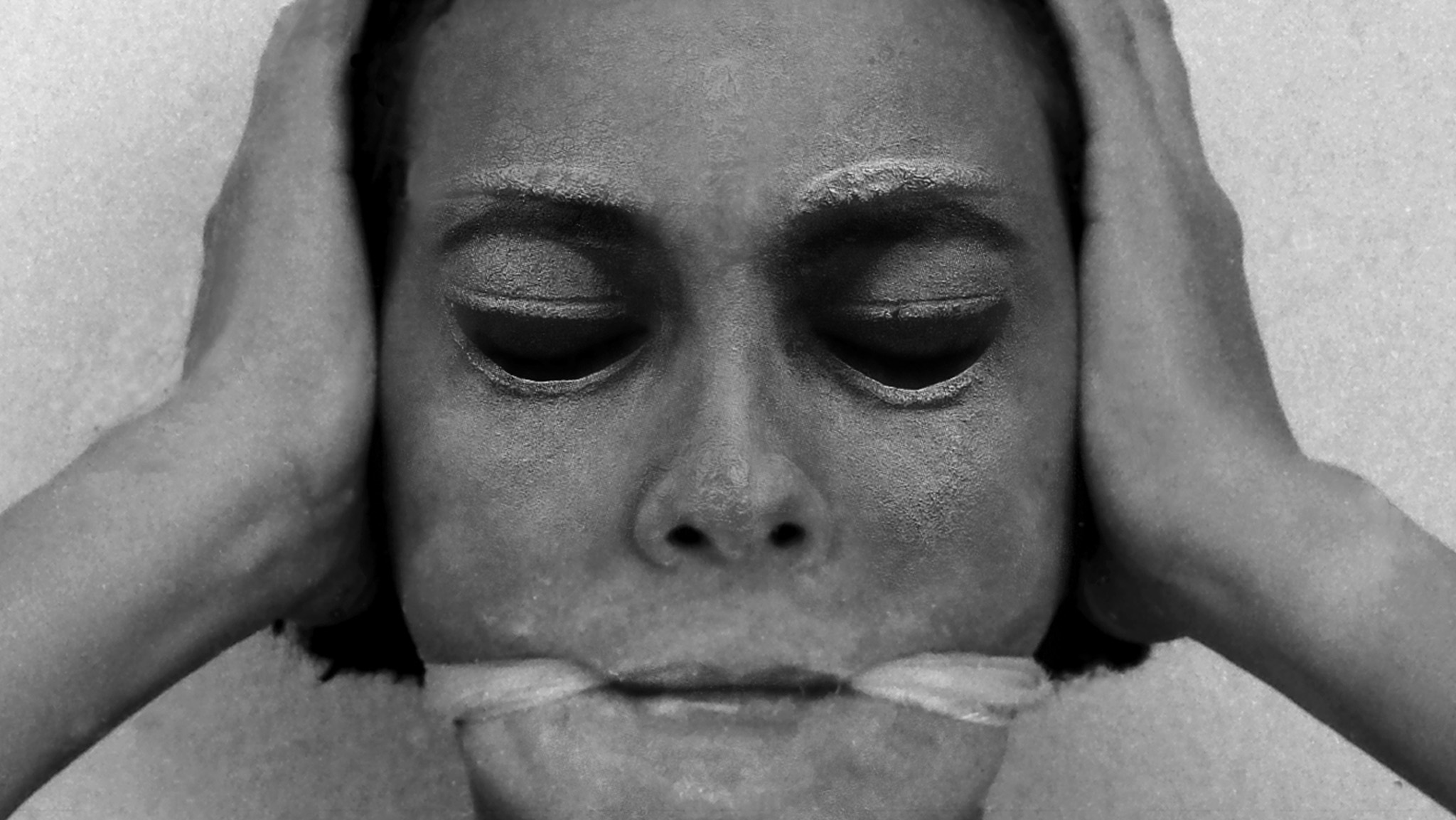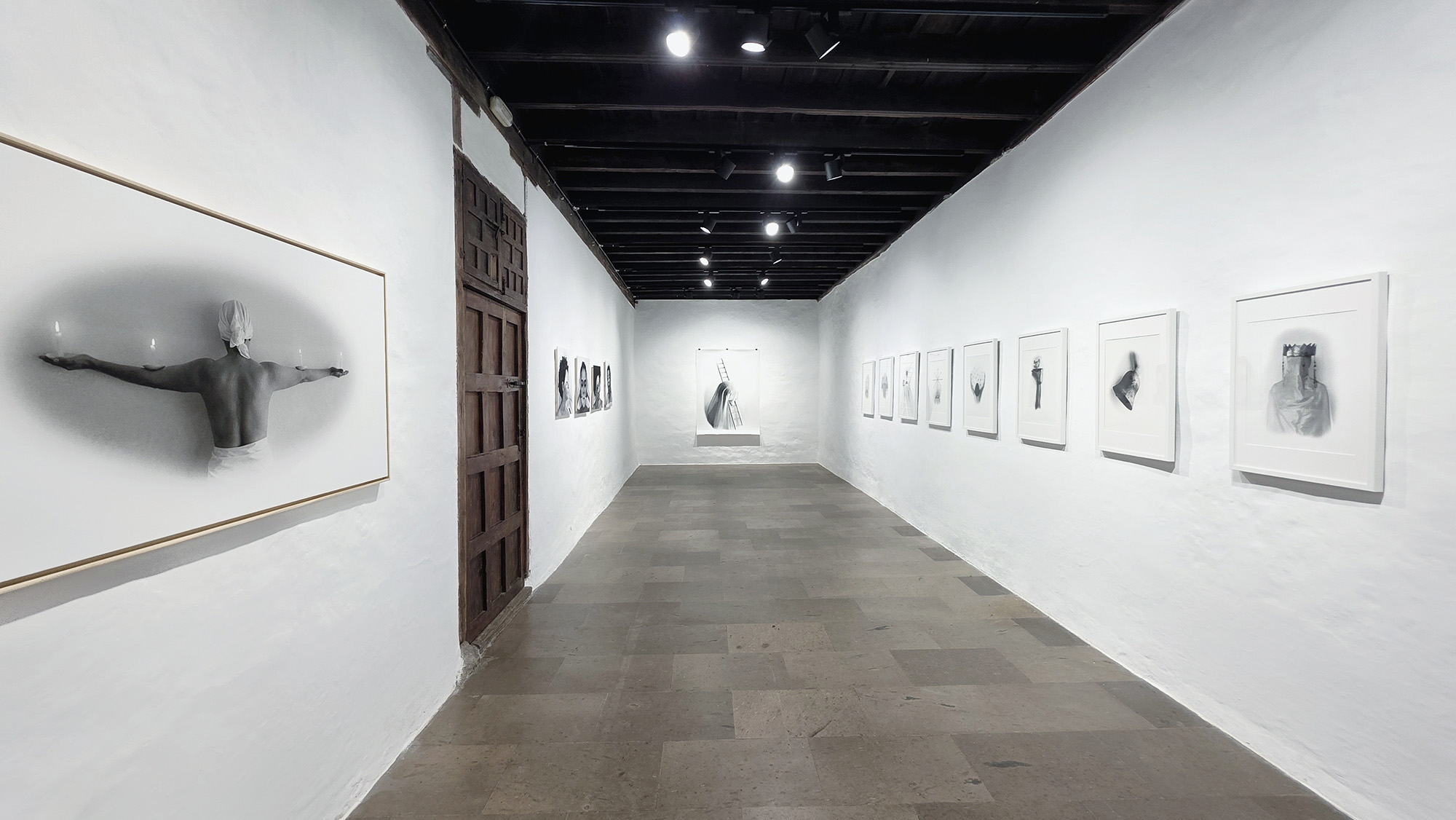
The Journeys of Marta María Pérez Bravo
Laura Arañó Arencibia
Marta María Pérez Bravo (Havana, 1959) does not shy away from journeys. Her work has endured the uprooting imposed by migration—the constant voyage, both symbolic and physical—that challenges the geography of the islands and the transformations time imposes on a body of work that has evolved over more than four decades. Born in Havana in the 1960s, educated in the tradition of the San Alejandro Academy and shaped by the currents of the 1980s Cuban avant-garde—during her studies at the then-nascent Instituto Superior del Arte (ISA)—her work entered the visual imagination of Cuban art with a defiant energy. Her black-and-white photography captures a mythical-religious universe in a balance of subtlety and power, enchanting the viewer even when its references lie beyond immediate comprehension.
The artist first began to explore myth, understood in a broad sense, as her university education came to an end. In those early years, when she graduated with a degree in painting, with a thesis that sought to use photography as a method of documenting her actions – very close to land art – Marta crafted paper braids that she integrated into the landscape. She created forms akin to crosses, inspired by the folk wisdom of Cuban peasants, who made them to ward off storms. The ephemeral nature of these interventions and the need to capture these images gradually led her towards photography as a means of expression. Her incessant curiosity led her, some years later, to completely transform her artistic body of work and become the subject of almost all of her pieces.
In the early 1990s, the artist began reclaiming her own image, transforming it into a synthesis that embodies the sacred realm of Afro-Cuban religiosity. Early depictions of patakines, deities and Afro-Cuban myths—sometimes nearly indecipherable to those outside this culture—were brought to life through a striking interplay of light and shadow upon her body, radiating a visual power that defies explanation. A kind of intimate sacredness, deeply human, unrelated to rituals or liturgies, sets the work apart from other representations, precisely because of the way she constructs her images. On the one hand, the objects she uses are mostly made by her, down to the smallest detail, and on the other, it is not a photographic construction, but a staging in which the photo is merely the final result. Marta María is not in actual fact a photographer in the strict sense, although photography is the backbone of her creative work. It is not just about taking a photograph but about understanding its dimension, which goes beyond the limits of two-dimensionality. The artist carefully stages her works, considering every possible way to present them. This approach explains her embrace of new materials and mediums, as her practice has expanded into installation and video art. Where once her imagination was confined to small formats and gelatin silver prints, she now astonishes with digital printing and boundary-breaking approaches applied to traditional photographic materials: canvas, metals, and ceramics also populate her creative spectrum.

Over the last decades of her practice, the artist has reconfigured her poetics towards a higher plane of spirituality. She moves beyond the materiality of the object and the religious representation itself, striving to capture “the beyond.” The beauty and mystery of these works, inspired by the spiritism of Allan Kardec, lie precisely in that hidden dimension, one that her lens cannot capture but which is part of the work. Not only has her photography progressively transfigured itself; it has also become a new form of expression through video art. These are silent creations, in black and white—like her photographic work—where she explores new expressive resources that lend each piece a note of singular mysticism. It is not only the final result of these conceptual and formal investigations that captivates, but also the meticulous process behind each video; much like her approach to photography, Marta María constructs these scenes almost by hand.
The mystery and innate fascination emanating from her works have allowed them to converse naturally with other contexts. Her practice is not limited to the act of making images; it is an ongoing journey of exploration, a dialogue between tradition and contemporaneity, between collective memory and personal introspection. Her work has enabled a symbolic construction capable of transfiguring reality, etching into it the signs of the invisible. Transfigured as both setting and medium, her body redefines the role of the subject, becoming a bridge between the human and the divine, between the everyday and the transcendent. Her poetics reveal a profound understanding of the relationship between matter and spirit, between object and symbol, situating her work in a space where the viewer does not merely observe, but participates in a silent rite, an act of recognition and reverence for the complexity of the world she represents. As we move through her images, we are confronted with the intensity of the ephemeral and the permanence of the essential, the tension between the force of myth and the delicacy of gesture.